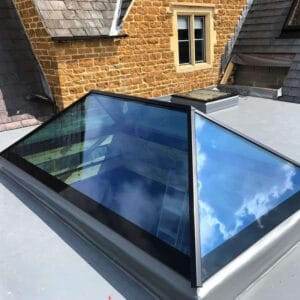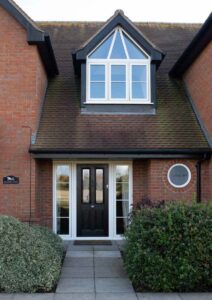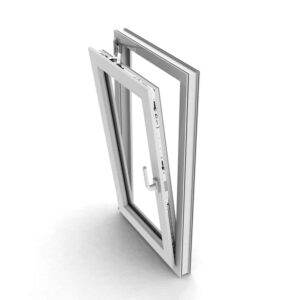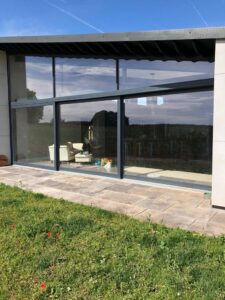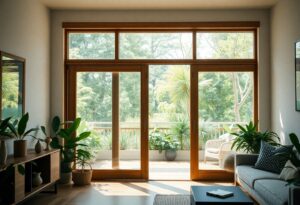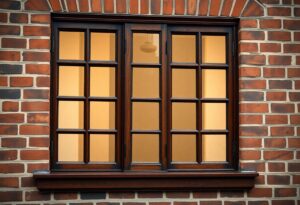With a growing emphasis on sustainability and innovative design, the transition from traditional timber to modern materials like R9 offers exciting possibilities for your projects. By embracing these advancements, you can achieve a balance between authentic aesthetics and functional performance. This blog post will explore how you can integrate these contemporary materials while still honouring the classic appearance and charm that define your aesthetic vision.
The Evolution of Timber in Design
For centuries, timber has been a cornerstone in design, embodying both aesthetic appeal and structural integrity. Its warm tones and rich textures bring a sense of nature indoors, while its versatility allows for innovations in various architectural styles. As design trends have evolved, the way timber is utilised has transformed, incorporating modern techniques and materials that enhance its natural qualities, thus bridging the gap between traditional craftsmanship and contemporary aesthetics.
Historical Significance of Timber
Historical records illustrate timber’s fundamental role in construction, furnishing, and craft. Ancient civilisations relied on its availability and resilience, making it a preferred material for building homes and crafting furniture. Its enduring presence in historical landmarks highlights a deep-rooted connection to our cultural heritage, serving as a testament to the skill and creativity of artisans throughout history.
Challenges of Traditional Materials
To employ traditional materials like timber effectively, you must be cognisant of several challenges that can arise.
Materials such as timber may face issues like susceptibility to decay, pest infestations, and inconsistent quality. These challenges not only impact the lifespan of your projects but can also lead to considerable maintenance and repair costs over time. Additionally, obtaining sustainably sourced timber can be laborious, as you strive to align your design choices with environmental responsibility. Balancing the desire for authentic aesthetics with these potential hurdles can be demanding, yet with modern advancements, you may find solutions that preserve the beauty of wood while mitigating these concerns.
The Rise of Modern Materials
One of the most significant developments in architecture and design has been the emergence of modern materials that challenge traditional norms. As technology advances, you will find that these innovative options not only enhance performance but also offer a striking aesthetic that can complement historic styles. The shift towards modern materials reflects a broader trend of prioritising sustainability and longevity while preserving the charm of authentic designs you cherish.
Overview of R9 Materials
On the forefront of this evolution are R9 materials, which mimic the appearance of traditional timber while providing enhanced durability and efficiency. These materials are engineered with precision to resemble the textures and tones you might expect from classic wood. You can explore R9 options to achieve an elegant look without compromising on modern performance standards.
Benefits of Using Modern Alternatives
Across the board, modern alternatives like R9 materials offer numerous advantages over traditional timber, including greater resilience, easy maintenance, and superior insulation properties. You can enjoy a timeless aesthetic without the drawbacks commonly associated with natural wood, such as susceptibility to rot and pests.
It is imperative to consider that by choosing modern alternatives, you gain greater durability and low maintenance costs. Unlike traditional timber, which may require periodic treatments and endure wear and tear, R9 materials are engineered to withstand the elements while maintaining their visual appeal. This means you can invest in a solution that not only preserves the authentic aesthetics you desire but also offers long-lasting performance. With the added benefit of improved energy efficiency, these materials can reduce your energy bills and environmental impact, allowing you to enjoy your spaces without the worry of extensive upkeep.

Preserving Authentic Aesthetics
You may wonder how to maintain the integrity of traditional aesthetics while embracing modern materials. The key lies in carefully selecting materials that harmonise with the original design elements of your architecture. Using high-quality replicas of traditional features can help preserve the character of your home, ensuring it reflects its historical significance whilst benefiting from the advancements in functionality and energy efficiency that modern materials provide.
Design Techniques for Authenticity
Any renovation necessitates a thoughtful approach to preserve authenticity. Implementing traditional design techniques, such as detailed moulding, correct proportions, and suitable colour palettes, can create a seamless blend of old and new. By valuing craftsmanship and employing skilled artisans, you can ensure that your project respects the original character of the building.
Examples of Successful Integrations
At many heritage sites, successful integration of modern materials has led to impressive results. These projects showcase how contemporary innovations can be applied without compromising aesthetic integrity. You can draw inspiration from these profound transformations where modern timber alternatives or R9 windows have been used effectively to enhance both functionality and beauty.
It is crucial to explore how architecture firms and designers have successfully integrated modern materials into traditional settings. For instance, the combination of R9 window systems with vintage facades maintains the original charm while providing improved energy efficiency. In one stunning renovation of a Victorian terrace, the use of modern timber with classic detailing has allowed for a seamless transition that respects the heritage while enhancing performance. These positive examples illustrate that you can achieve a desirable balance—preserving the authentic aesthetics of your space while enjoying the benefits of modern advancements.

Sustainability in Material Selection
After considering the aesthetics of modern materials, it is crucial to focus on sustainability in your material selection. The shift to innovative materials can significantly impact your projects, as you balance style with environmental responsibility. Choosing materials that align with ecological values ensures that your designs not only look good but also contribute positively to the planet. Embracing sustainable practices in material choice is increasingly important for homeowners and builders alike, reflecting a broader commitment to environmental wellbeing.
Environmental Impact of Modern Materials
Above all, the environmental impact of modern materials warrants careful consideration. Many contemporary materials are designed to reduce energy consumption and waste during production, helping to lower your overall carbon footprint. Additionally, advancements in recycling and reusability have made it easier for you to choose sustainable options without sacrificing visual appeal. As you explore modern materials, understanding their environmental advantages will empower you to make informed decisions for your projects.
Timber vs. Modern Materials: A Sustainability Perspective
On examining the sustainability perspective between timber and modern materials, it is vital to recognise the advantages and drawbacks of each. While timber is a renewable resource, its sourcing can lead to deforestation and habitat loss if not managed responsibly. Conversely, modern materials often utilise advanced technology to minimise waste and environmental degradation, yet their production can be energy-intensive. You must weigh these factors to select the most sustainable option that meets your design aspirations.
Sustainability plays a key role in comparing timber and modern materials. You might appreciate timber for its natural aesthetic and renewability; however, unsustainable logging practices can have severe consequences, including biodiversity loss. In contrast, many modern materials offer eco-friendly alternatives, often made from recycled components and designed with longevity in mind. These materials can reduce waste and energy use, promoting a sustainable approach to your building projects. Your choices matter, as they shape the future of the environment while enhancing your design vision.
Case Studies: Projects Utilizing R9 Materials
Your exploration of R9 materials will unveil a variety of impressive case studies, showcasing their application in both residential and commercial settings. Here’s a detailed list of remarkable projects:
- 1. Eco-friendly Homes in Sussex – Utilised R9 materials for enhanced thermal efficiency and reduced carbon footprint.
- 2. Lichtenstein Gallery Renovation – Incorporated R9 cladding for a modern aesthetic while preserving historical elements.
- 3. Urban Park Pavilion – Used R9 materials to create a durable, weather-resistant structure that blends seamlessly with its environment.
- 4. Regeneration of Old Mill – Transformed a historic site using R9 windows, maintaining the original character while improving energy efficiency.
Residential Applications
For homeowners, utilising R9 materials offers a unique blend of modern technology and traditional charm. Projects like Eco-friendly Homes in Sussex not only enhance energy efficiency but also preserve the aesthetic appeal of classic designs.
Commercial Spaces
The integration of R9 materials in commercial settings is exemplified by the Lichtenstein Gallery Renovation, where contemporary practices meet historic architecture. This project highlights the advantages of using R9 to maintain the gallery’s artistic integrity while improving functionality.
Case studies in commercial spaces demonstrate the versatility and benefits of R9 materials. For instance, the Urban Park Pavilion offers a robust structure, enhancing safety and usability for public activities. Meanwhile, in sensitive projects like the regeneration of an old mill, R9 windows maintain historical accuracy while delivering energy-saving solutions. These projects showcase how R9 isn’t just a material; it’s a pathway to marrying modern durability with timeless designs.
Expert Insights and Best Practices
Unlike traditional materials, modern innovations like R9 allow you to achieve the charm of timber while offering improved durability and maintenance. Understanding these advancements will enhance your ability to select materials that not only fit your aesthetic requirements but also meet practical needs, ensuring your projects are both beautiful and long-lasting.
Interviews with Industry Professionals
Before you decide on materials for your projects, insights from industry professionals can provide invaluable perspectives. Their experiences often highlight the advantages and pitfalls associated with various options, helping you make informed choices that align with your vision and clientele’s preferences.
Recommendations for Designers
Below are some key recommendations to guide your design choices. Prioritise materials that blend aesthetic appeal with sustainability. Engage with manufacturers who provide clear information about the origins and benefits of their products, ensuring transparency in your selection process.
To effectively balance design integrity with functional demands, it is vital to explore diverse modern alternatives like R9. These materials are often lighter, easier to work with, and can replicate the authentic look you desire without compromising on performance. When integrating new materials, consider how they interact with your overall design theme, and keep in mind the long-term maintenance costs—choosing wisely will pave the way for successful projects that stand the test of time.
Summing up
Conclusively, as you explore the transition from traditional timber to modern materials like R9, you can appreciate how these innovations maintain the authentic aesthetics of your buildings. By integrating contemporary materials, you not only enhance the longevity and functionality of your spaces but also preserve their traditional charm. This balanced approach allows you to enjoy the best of both worlds, ensuring that your homes reflect both historical significance and modern durability.
FAQ
Q: What are R9 materials and how do they differ from traditional timber?
A: R9 materials refer to a specific category of modern building materials designed to emulate the appearance of traditional timber while offering enhanced durability and maintenance benefits. Unlike traditional timber, which can be susceptible to weathering, rot, and insect damage, R9 materials are engineered to withstand the elements, providing a longer-lasting solution without sacrificing aesthetic appeal.
Q: Can R9 materials truly replicate the look of authentic timber?
A: Yes, R9 materials are specifically crafted to mimic the visual characteristics of traditional timber. Advanced manufacturing techniques allow for the creation of textures, grain patterns, and colours that closely resemble real wood, making it almost indistinguishable at a glance. This ensures that properties maintain an authentic aesthetic while benefiting from the practicality of modern materials.
Q: What are the environmental impacts of using R9 materials compared to traditional timber?
A: R9 materials often have a lower environmental impact than traditional timber, as they can be made from recycled content or sustainable sources. Additionally, because they are more durable and require less maintenance over time, this can reduce the need for replacement and repair materials, further contributing to their eco-friendliness. However, it is crucial to review the specific manufacturing practices of the R9 materials in question to assess their overall sustainability.
Q: Are R9 materials suitable for all types of building projects?
A: R9 materials are versatile and can be suitable for a wide range of building projects, including residential, commercial, and restoration tasks. They are particularly beneficial in situations where the appearance of traditional timber is desired but where performance and maintenance considerations are also significant. Consulting with an architectural professional can help determine the best use of R9 materials for specific design requirements.
Q: How do R9 materials contribute to the preservation of heritage aesthetics in renovations?
A: R9 materials are designed to blend seamlessly with existing architectural styles, allowing for renovations that respect and preserve the historical aesthetics of a building. Architects and designers can use R9 materials to modernise spaces while still honouring their heritage, ensuring that the overall character and charm remain intact. This makes R9 an excellent choice for projects focused on heritage preservation and sympathetic restoration.

